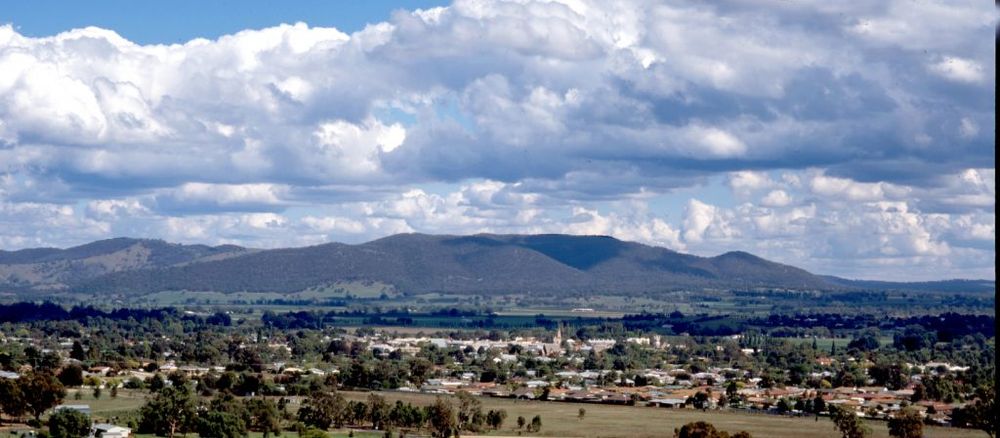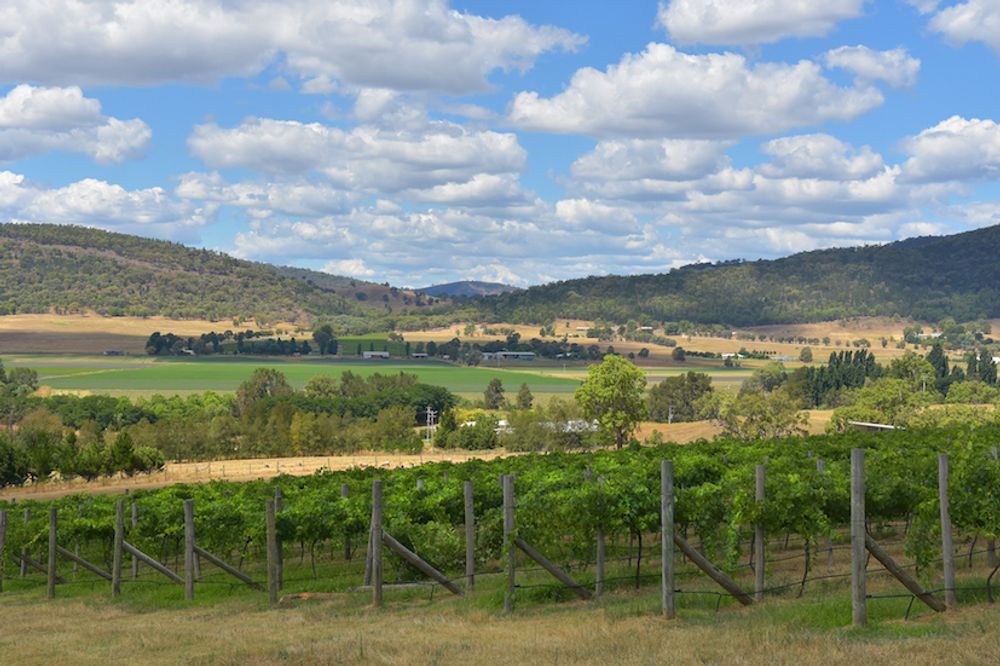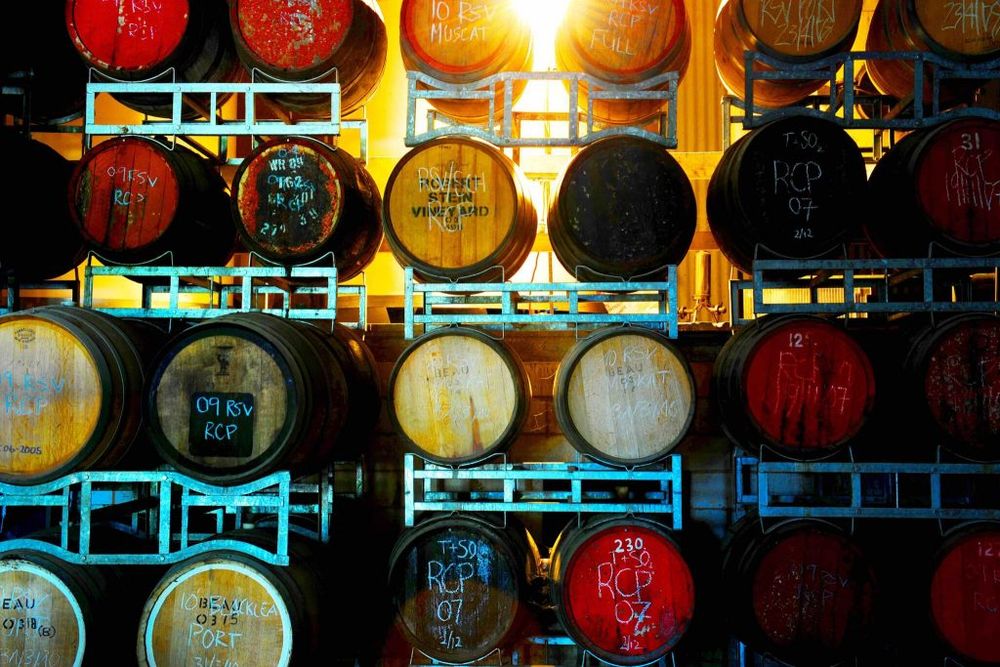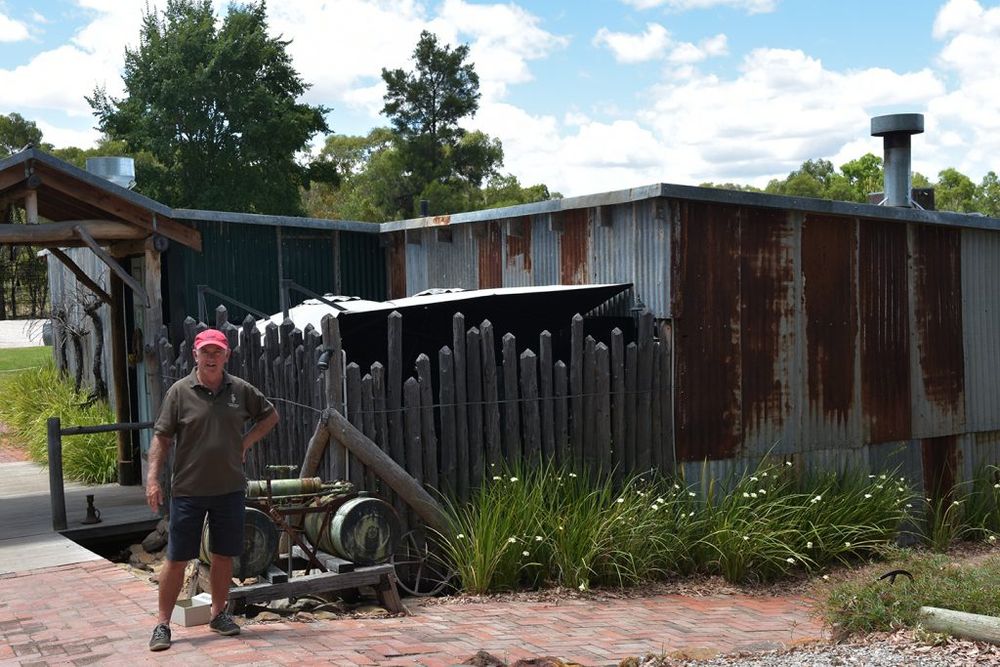The white wines from Mudgee have an umami-like sweetness in the mid palate and the reds have a soy sauce acidity – characters of the wines due to the 500+ metre elevation.
The Hunter Valley may the best known wine region in New South Wales, but it is not quite the oldest. For, as long ago as 1822, wine was first produced in Mudgee by the Cox family, who had emigrated from Britain.

Although mainly sheep and cattle farmers, the Cox family planted vines, which were augmented by German emigres in the ensuing decades.
Robert Oatley chose Mudgee for its HQ
Descendants of theirs, the Steins, are among the best contemporary winemakers in Mudgee, although much the biggest and best-known producer in the region is Robert Oatley Vineyards, whose wines are widely available internationally, with Hatch Mansfield distributing in the UK.
The fact that the Robert Oatley brand picked Mudgee for its home base says much about the region.

The view of the Mudgee area taken from Logan Wines
The pretty but unprepossessing town, a three-hour drive north-west of Sydney, has only 22,000 inhabitants but its surrounding altitude of 450-550 metres means its vineyard sites have a wide diurnal range and therefore preserve acidity better than warmer regions like the Hunter Valley.
Indeed, Mudgee makes some outstanding Rieslings and Chardonnays, as well as some fine red wines from a number of varietals, including Cabernet Sauvignon, Shiraz, Grenache and even Zinfandel.
The Oatley family, with Sandy the new chairman of the company after Bob’s death last year, have 150 hectares under vine in Mudgee, with a whole host of quality levels right up to super-premium.
The massive new facility they have at Mudgee allows them to bottle half a million bottles per month there, making it one of Australia’s most important concerns.
Juice in refrigerated trucks comes in from Oatley-owned vineyards all over the country, most notably from Western Australia, three days drive away. As much as 1.5 million litres from that state alone makes its way to the Mudgee winery every year.

Rob Merrick, head winemaker at Robert Oatley
Rob Merrick, the head winemaker, crafts some notable examples from Mudgee fruit.
The Montrose Black Mudgee Shiraz 2014, from the two best blocks for that varietal, showed particularly well, its tannins being beautifully integrated. Matured in 40% new oak, it had a mixture of appealing red and black fruit.
The Pennant Chardonnay 2013, made from Mudgee vines planted in 1961, was a superb wine, being elegant and very long.
Stein Vineyard’s restaurant wouldn’t look out of place in Mad Max
Jacob Stein, whose ancestor of the same name emigrated to New South Wales from Germany in 1838, is another talented winemaker, producing some of the best Riesling from the region.

Barrels at Robert Stein Vineyard
The Robert Stein Vineyard, named after his grandfather who established the site, has some 42-year old Riesling vines on gravel and schist that yield a reserve label of exceptional quality – very long with the most vibrant acidity.
Jacob’s father, Andrew, handles marketing and sales, and set up one of Mudgee’s most celebrated winery restaurants, the splendidly-named Pipeclay Pumphouse.

Its corrugated iron exterior would not be out of place on the set of a Mad Max film, but the cuisine is world-class. Chef Andy Crestani worked at many of Sydney’s top restaurants before settling in Mudgee.
Trying to pin down what makes Mudgee wines unique
Mudgee actually has a number of excellent places to eat for those who want to visit the region for two or three days. In town, the Wineglass in Market Street serves some tasty fare, while another winery, Lowe Wines, does delicious lunches in what is a delightful setting.
The winemaker there, David Lowe, is an engaging character, who produces top-class Riesling, Shiraz and Zinfandel.

David Lowe, winemaker at Lowe Wines
Having made wine in the Hunter Valley for the late Len Evans, a legend of the Australian wine industry, Lowe returned to the town of his birth at the start of the millennium.
Lowe succinctly pinpointed what Mudgee wine is all about.
“Len used to tell me that you have got to find the common thread in a region’s wine,” Lowe said. “When I first came here, I got a couple of serious wine tasters together over lunch, Max Allen and Robert Paul, and lined up a case of Mudgee wine from a dozen different producers.
They both said the common thread the white wines have is this thickness and texture in the middle palate, which is seen as sugar but isn’t. It’s a non-fermentable sugar. This was way before umami was talked about. It was probably more to do with phenolic compounds than anything else.
“In the red wines, it was a soya sauce acidity, a middle palate acidity. They reckoned that’s why Mudgee wines don’t taste too alcoholic or get that hotness. If you look at McLaren Vale wines of similar alcohol, there’s a hotness or a sweetness, a slight jamminess. Here, because we’re continental, with 500-metre elevation, we’ve got acidity which can hide that level of alcohol.”
This certainly applied to a leading red Mudgee producer, Huntington Estate, whose Cabernet Sauvignon and Shiraz is superb.
The Vinifera winery, which is certified organic, is another good example, its fruit being vinified by Jacob Stein on behalf of owner, Tony McKendry.
Stein makes wine for 22 local growers, who have no equipment to do so. Nearly 180 years after his ancestors arrived in Australia, Stein is helping to fly the flag for Mudgee along with the region’s big daddy, Robert Oatley Vineyards.









































